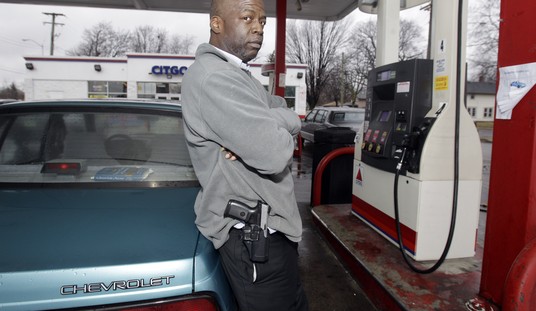We see a lot of fact-checking here at Bearing Arms. Most of it is…questionable, at best.
Yet when someone not on the left side of the media does it, it’s often pretty good. In theory, fact-checking really should be the unbiased place in a newsroom. Even if everything else is biased, the truth is the truth. Bias doesn’t really have a place there.
As a result, a lot of anti-gun claims don’t get fact-checked.
It seems the Epoch Times decided that needed to change.
“[We’ve had] more school shootings than days in the year so far in 2023.” — Sen. Chris Murphy (D-CT), CBS’s Face the Nation, April 2
This is a misleading claim from Murphy.
The Connecticut Democrat has long served as a voice for gun control advocacy due to the painful history of his home state, where a school shooter claimed the lives of more than two dozen people, most of them children under 7 years old, in 2012. Murphy was the congressman representing the district of the school at the time.
He appeared to cite statistics from the K-12 School Shooting Database, a data resource compiled by the Violence Project.
That database claims 95 shooting incidents have taken place at schools so far in the 93 days of this year.
But the claim is misleading because of just how broadly the group defines a shooting incident. The total includes any incident “when a gun is fired, brandished (pointed at a person with intent), or bullet hits school property, regardless of the number of victims, time, day, or reason,” according to the Violence Project.
That means, for example, that a gang-related shooting near a school during which a bullet strikes a sidewalk on a weekend, with no students present, would still count toward the total number of school shootings for the year.
And understand, it’s very hard for me to believe that such a broad definition is accidental. This is designed to inflate the number of so-called school shootings because many schools are in rough parts of town–kids living there deserve an education too, after all–so the laws of probability mean that at least some are going to take fire, even if no one is there.
Yet they also know that people have a picture in their head of a school shooting and that is what they’re banking on.
Murphy wasn’t the only fact-check conducted, either.
Writer Sarah Westwood also took a crack at Sen. Cory Booker and his claim that guns are the leading cause of death for kids.
Sen. Cory Booker (D-NJ) recycled a well-worn talking point that Democrats have brandished since 2020, when statistics made it technically possible for them to make this claim.
However, the assertion is somewhat misleading.
Firearms slightly edged out motor vehicle accidents in 2020 to become the leading cause of death for children — but only if one includes juveniles up to and including 19 years of age in the calculations.
When analyses exclude 18- and 19-year-olds from the statistics, motor vehicle accidents remain the leading cause of death for children.
The United States also has a significantly higher teenage suicide rate than other countries, the Kaiser Family Foundation notes, and suicides account for a major portion of youth deaths attributed to firearms.
An uptick in street violence involving juveniles over the past three years has also likely contributed to the increase in gun casualties among young people.
Using those statistics in the context of a conversation about school shootings is misleading because it conflates suicides, gang violence, firearm accidents, and other types of shootings with the attacks on schools that most people would associate with the idea of school shootings.
There’s a lot more, but Westwood does a very good job ripping apart these claims.
See, both of these are prime illustrations of why people say you have lies, damn lies, and statistics. It’s not difficult to massage the data to give you the story you want. Overly broad definitions of types of shootings inflate those numbers and paint a picture very different from reality.
This is by design, though, because if people realized what the actual scope of the issue truly was, they might not be so quick to forfeit their rights.
So these lawmakers use these statistics, regardless of anything else, because it makes their point. Who cares if it’s true? Fake but accurate is all that matters to them.
Of course, they might not really understand the data they’re throwing around. They might not know how to look at a study critically.
If so, they should learn because they’re embarrassing themselves.








Join the conversation as a VIP Member